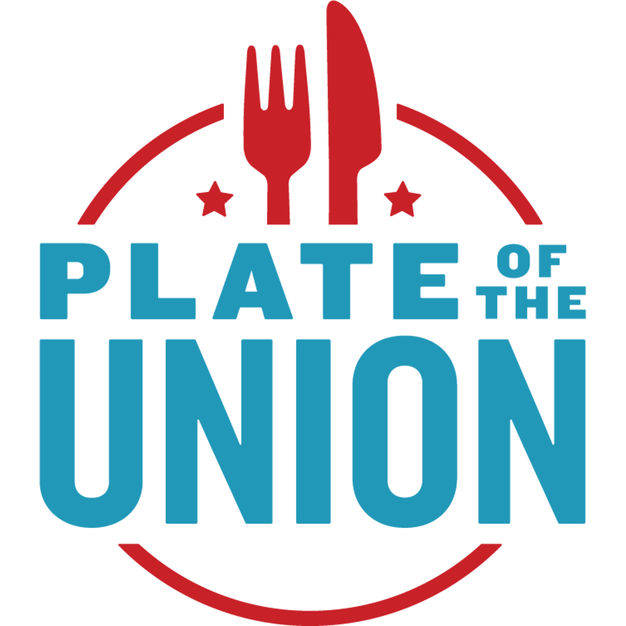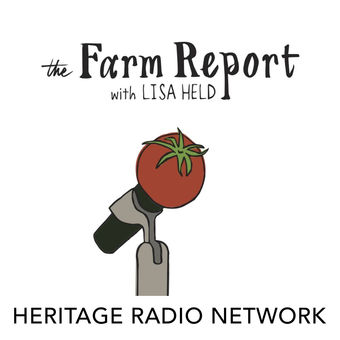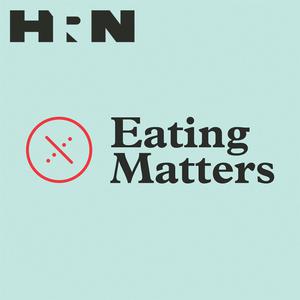
Inside School Food
Heritage Radio Network
A showcase for fresh insights that are making a difference, and progressive solutions that really work. Peer leaders from across the nation share their stories about fighting hunger, coping with regulation, and meeting sustainability goals. About winning kids over and changing lives with creative menus packed with fresh whole food. Need help keeping up with emerging school nutrition policy, legislation, and research? We’ve got that covered, too. From the Heritage Radio Network.
- 32 minutes 39 secondsEpisode 72: In Michigan, "10 Cents a Meal" For Farm To School
What can you get for a dime? Add it to the federal reimbursement for a school meal, and it buys a lot. Use it to support spending on farm to school, and it generates many more times its value in local economic development. That's the thinking behind Michigan's "10 Cents a Meal" pilot, which directs millions of dimes into locavore salad bars, entrees, and snacks for children in 16 districts. Modeled after trailblazing farm to school policy in Oregon, the program received state funding for the first time this year. At just $250K, it seems a small start. But its crafters, and its champions in the state Senate, are planning on big—statewide in time, just like in Oregon.
17 October 2016, 4:01 pm - 34 minutes 39 secondsEpisode 71: Smart Snacks and Sneaky Snacks
What's so smart about those USDA-regulated "Smart Snacks" sold in school vending machines? More whole grain, and lowered sugar, fat, and calories—even if they're Cheetos, Doritos, or Pop Tarts. These reformulated items are less unhealthy, sure, but new research from the Rudd Center for Food Policy and Obesity proposes that their "copycat" look and packaging is designed to maintain brand loyalty outside of school, where the original versions are heavily marketed to teens. The strategy may be working—and backfiring on school food service when the presence of perceived junk food undermines parent trust.
26 September 2016, 3:09 pm - 24 minutes 44 secondsEpisode 70: Remembering Philando Castile
On July 6, 2016, the school nutrition community suffered the tragic loss of one of its own when Philando Castile was shot by police during a routine traffic stop in Falcon Heights, Minnesota. Philando—a.k.a. "Mr. Phil" and "Mr. Rogers with dreadlocks"—was the beloved 32-year-old cafeteria supervisor for the J.J. Hill Montessori School in Saint Paul. In this special episode, produced in collaboration with Saint Paul Public Schools, we hear about Philando from his colleagues and his mother, Valerie Castile. They join us in mourning, and in celebration of a life well lived and a job well done.
Image: Student letter posted outside J.J. Montessori School, Saint Paul: "This year I was going to give you a gift but then you dided but Im giving you a gift anyway! You hade the biggest heart ever I rilly miss you. I rilly rilly miss you Your the best lunch man we ever could have I wish you were alive. You have Rainbows in your heart!"
19 September 2016, 3:26 pm - 44 minutes 42 secondsEpisode 69: Why #StopTheBlock?
In a move they say will “spur innovation,” Republicans on the House Committee on Education and the Workforce have voted to issue block grants for school nutrition programs in three pilot states, cutting them loose from federal federal mandates and supervision. #StopTheBlock’s opponents to this measure—to date, more than 1,000 organizations—say these states would be cut loose from a lot more. On today’s episode, Education/Workforce Ranking Member Bobby Scott (D-VA) describes how block grants, because they’re easily shaved down in the federal budget, have historically led to the gutting of public services. Doug Davis of the Burlington (VT) School Food Project predicts an unraveling of standards, policies, and protocols that would cast farm-to-school and national supply chains into chaos and jeopardize the nutrition safety net of millions of children in need.
27 June 2016, 2:04 pm - 51 minutes 12 secondsEpisode 68: Community Eligibility Explained
Community Eligibility (CEP) is the most popular program to be introduced to federal school meals programs in many years. To date, 18,247 high-poverty schools in nearly 3,000 districts have begun using it to slash cumbersome paperwork, eliminate stigma, and include food-insecure children whom the previous certification system had left behind. Under CEP, every child eats for free, regardless of pay status. This might seem wasteful of taxpayer dollars, but that's only until you take close look at how the policy is designed. Do that, and you'll discover how CEP wipes out costly inefficiencies, leaving more funds available to feed students who need nutrition assistance the most.
23 May 2016, 4:43 pm - 31 minutes 1 secondEpisode 67: New research for boosting breakfast
From two new studies, research you can use to pitch your breakfast program to students, parents, and school administrators. First, evidence that a morning meal is critical to maintaining healthy weight in adolescents.
In fact, two breakfasts—at home and at school—are not just better than none, but very possibly better than just one. Second, evidence that participation goes up most reliably when the marketing strategy is direct, personal, and on-the-spot—and as simple as “Good morning, Johnny… How about you grab a breakfast on your way to class?”
16 May 2016, 10:32 pm - 39 minutes 29 secondsEpisode 66: Trending: Food Courts
Food courts at school are an increasingly popular way to win the participation of trend-savvy teenagers. If you’re flirting with the idea for any of your sites, give a close listen to today’s guests. They’re equally prepared to either talk you into or out of the immense investment involved in embracing this style of food service. Because it doesn’t involve just money, but also—and more significantly—a commitment to sea change in the entire school community’s attitude towards lunch. Not ready for that? Listen anyway, because best practices in the biggest, hippest food courts can be best practices anywhere.
2 May 2016, 3:31 pm - 34 minutes 8 secondsEpisode 65: From California, New Recipes for Success
We've all heard that too many cooks can spoil the broth, but that's hardly the case on today's episode. The new FRESHMeals collection of recipes for schools is the work of several dozen cooks from 18 "California Ambassador" districts, pledged to mentor and share best practices state-wide. It took more than two years of tightly coordinated trial-and-error to build a database of 140 (so far) dishes that are off-the-shelf school ready—fully vetted for practicability, affordability, customer appeal, and compliance with USDA meal standards. Not in California? No problem. FRESHMeals are available online, to everyone.
25 April 2016, 5:13 pm - 35 minutes 48 secondsEpisode 64: CNR Update: House Committee Pushes Back
Ten days ago, POLITICO's Helena Bottemiller Evich reported the latest development in the long and difficult path to CNR 2015 (now CNR 2016, as it is more than six months overdue). "The House Education and the Workforce Committee has finally come up with a child nutrition reauthorization bill," she wrote, "and it looks like it could be everything health advocates feared." Indeed, there appear to be critical, troubling differences between this bill and the one released by the Senate's committee in early January. Today, with Helena’s help, we unpack the contents of this new bill and speculate over what may happen next.
19 April 2016, 3:22 am - 35 minutes 55 secondsEpisode 63: Intact Grains 101
When did school children start gobbling up quinoa with such pleasure? And how is it that they’re also reaching for salads made with unprocessed (hence “intact”) and highly nourishing unpolished rice, wheat berries, barley, buckwheat, and farro? Join Coleen Donnelly of InHarvest and five food service professionals from across the country to learn how to win over staff and students with intact grains. Which grains are gluten free, why are sprouted grains so special, and what makes a quinoa-kale burger so delicious? (Trust us: it is.)
22 February 2016, 5:20 pm - 35 minutes 50 secondsEpisode 62: Salad Bar Strategies: Learning From the Best in Riverside, CA
Today we re-visit a June 2014 episode with the salad bar gurus at Riverside Unified School District, in southern California. With new technical support for salad bars in schools on the way in CNR 2016, now is the time to take a close second look at a pioneering and celebrated program that still works as safely, profitably, and deliciously as it ever did. “Our attention to detail is what makes us different,” says Chef Ryan Douglas. Learn just what that means—and catch up on what RUSD has been up to since we last checked in.
8 February 2016, 5:43 pm - More Episodes? Get the App
Your feedback is valuable to us. Should you encounter any bugs, glitches, lack of functionality or other problems, please email us on [email protected] or join Moon.FM Telegram Group where you can talk directly to the dev team who are happy to answer any queries.


 Plate of the Union
Plate of the Union
 The Farm Report
The Farm Report
 What Doesn't Kill You
What Doesn't Kill You
 Eating Matters
Eating Matters
 Tech Bites
Tech Bites